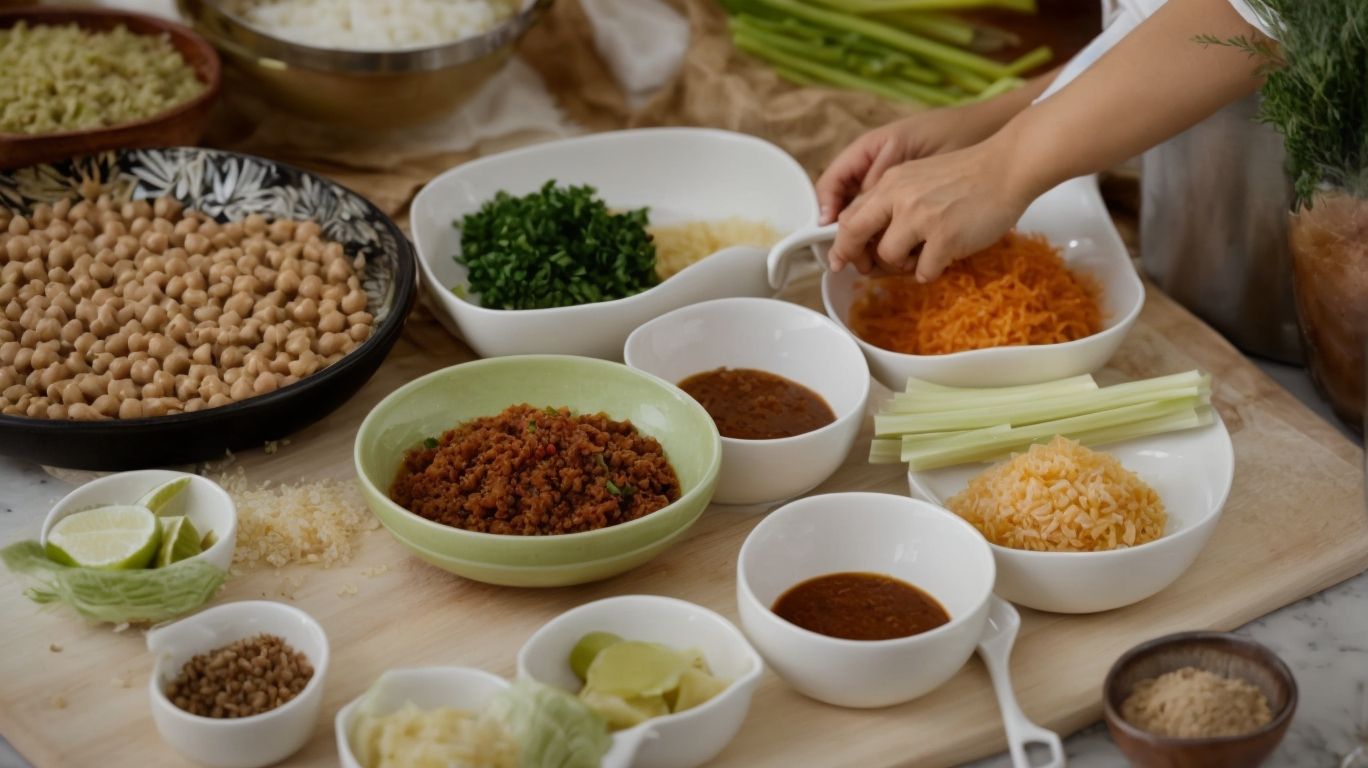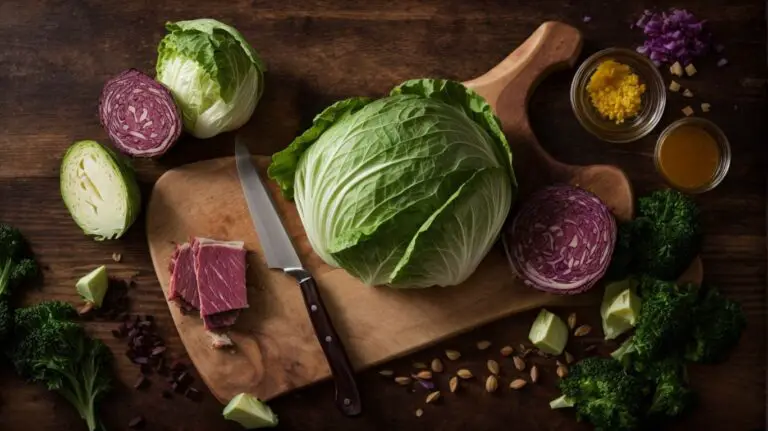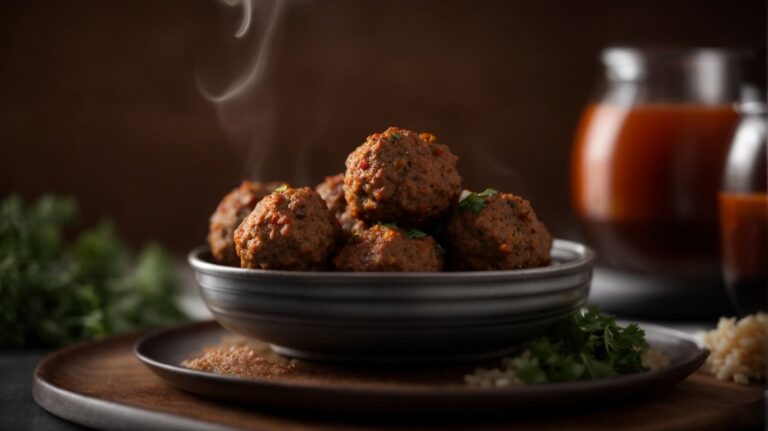How to Cook Misua With Patola?
Looking to add a new dish to your culinary repertoire?
Chef Chris Poormet’s recipe for Misua with Patola is a delicious choice!
We explore the combination of Misua noodles, patola (sponge gourd), and savory ground pork.
Chef Chris Poormet guides you through preparing the ingredients and perfecting the seasoning for a mouthwatering outcome.
Put on your apron and get cooking with this flavorful recipe!
Key Takeaways:
About Chef Chris Poormet
Chris Poormet, the owner of Poormet.com, is a renowned culinary blogger who was honored with the prestigious title of Culinary Blogger of the Year. With a background as a former chef excelling in food photography, Chris has garnered a dedicated following for his delectable recipes and insightful tips.
Chris’s journey in the culinary world started when he decided to combine his passion for cooking with his flair for artistic food presentation. His transition from the fast-paced kitchen environment to the digital realm of blogging allowed him to reach a wider audience seeking culinary inspiration.
Chris’s expertise extends beyond just creating mouth-watering dishes; he is also known for his attention to detail in food styling and photography, elevating his blog to a visually captivating space that appeals to food enthusiasts and amateur chefs alike.
Poormet.com serves as a hub for both seasoned cooks looking to expand their repertoire and beginners eager to learn the basics of cooking and presentation.
What is Misua with Patola?
Misua with Patola is a comforting soup dish that combines the delicate flavors of misua, a type of Chinese vermicelli, with the subtle sweetness of patola, also known as sponge gourd, creating a traditional Filipino favorite.
The key ingredient, misua, is a thin wheat noodle that cooks quickly and has a pleasingly smooth texture. Patola, on the other hand, adds a refreshing element with its mild flavor and tender consistency. When simmered together, misua absorbs the flavors of the broth while the patola adds a slight crunch. This soup is typically prepared by sautéing garlic, onions, and tomatoes before adding the misua and patola, enhancing the dish’s depth of flavor.
Ingredients for Misua with Patola
To prepare a delicious batch of Misua with Patola, gather a variety of essential ingredients including succulent pork, flavorful meatballs, fresh patola, aromatic garlic and onion, chicken broth, and an assortment of seasonings like fish sauce and pepper.
In Misua with Patola, each ingredient plays a crucial role in creating a harmonious flavor profile. Succulent pork adds richness and depth, while flavorful meatballs provide a hearty texture. Fresh patola brings a light and refreshing element to the dish. Aromatic garlic and onion contribute layers of savory umami flavors. Chicken broth serves as the flavorful base, enhancing all the ingredients.
When preparing Misua with Patola, it is essential to slice the ingredients uniformly for even cooking. Thinly slice the pork and patola to ensure they cook through quickly. Meatballs can be made small for bite-sized enjoyment. Sautéing garlic and onions until fragrant adds a robust flavor foundation.
For optimal taste and texture, simmer the ingredients together in the chicken broth until all the flavors meld together beautifully. The addition of fish sauce and pepper towards the end of cooking balances the savory and umami notes, elevating the overall taste of Misua with Patola.
Misua Noodles
Misua noodles, also known as Chinese vermicelli, are thin, delicate noodles that add a unique texture to the Misua with Patola soup, absorbing the rich flavors of the broth and other ingredients.
These noodles have a tender consistency that makes them perfect for soups, as they readily soak up the delicious essence of the dish they are cooked in. To cook Misua noodles, simply boil them in water until tender, which typically takes only a few minutes due to their thin nature. To ensure they maintain their delicate texture, it’s advisable to add the noodles to the soup just before serving to prevent them from becoming overly soft.
Patola (Sponge Gourd)
Patola, or sponge gourd, is a versatile vegetable used in Filipino cuisine, prized for its mild flavor and ability to soften beautifully in soups like Misua with Patola, imparting a subtle sweetness to the dish.
When preparing Patola, it is important to choose a fresh and firm vegetable to ensure the best results. To begin, peel the outer skin of the Patola and slice it into uniform pieces. Patola’s unique texture adds a delightful contrast in the soup and complements the delicate Misua noodles perfectly. The mild flavor of Patola allows it to absorb the flavors of the broth and other ingredients, making it a versatile addition to various dishes. Adding Patola to Misua soup not only enhances the overall taste but also contributes to its nutritional value.
Ground Pork
Ground pork is a staple ingredient in Misua with Patola, contributing savory richness and satisfying meaty bites to the soup. Its flavors infuse the broth, creating a hearty base for the dish.
When using ground pork in the dish, ensuring it is properly browned is crucial to develop a deep, caramelized flavor. To achieve this, heat a pan over medium-high heat and add the ground pork, breaking it up with a spoon to ensure even cooking. Season generously with salt, pepper, and other spices like garlic powder or paprika for added depth.
The seasoned pork not only flavors the soup but also adds a delightful textural element, creating a contrast to the tender patola and delicate Misua noodles. Be mindful not to overcook the pork to maintain its juiciness and prevent it from becoming tough.
Garlic and Onion
Garlic and onion serve as aromatic foundations in Misua with Patola, infusing the soup with rich flavors and enticing scents. The combination of these essential ingredients elevates the overall taste profile of the dish.
Garlic, with its pungent and slightly sweet flavor, adds a robust depth to the soup, while onion brings a subtle sweetness and savory note. Together, these aromatics create a harmonious base that enhances the delicate taste of the patola and the misua noodles.
Proper handling of garlic involves mincing or crushing to release its oils and flavors fully, while onions are best sliced or diced to ensure even distribution in the soup.
During cooking, sautéing garlic and onion in oil until fragrant forms the flavor foundation of the dish, infusing the broth with their essence. Careful monitoring of heat is crucial to prevent burning and to allow the aromatics to develop their full potential.
Chicken Broth
Chicken broth serves as the flavorful base of Misua with Patola, imparting a comforting taste that harmonizes the diverse ingredients in the soup. Its rich essence enhances the overall savoriness of the dish.
When preparing homemade chicken broth for Misua with Patola, you have the opportunity to infuse the soup with layers of depth and complexity. The process of slowly simmering chicken bones, vegetables, and aromatics releases all the savory goodness into the liquid, creating a robust foundation for your dish. Using homemade chicken broth not only elevates the taste but also adds a personal touch to your culinary creation. Alternatively, if you’re short on time, opting for high-quality store-bought chicken broth can also contribute to a delicious outcome.
Fish Sauce
Fish sauce, a quintessential condiment in Asian cuisine, adds a savory umami depth to Misua with Patola, enhancing the overall flavor profile of the dish with its unique salty notes.
Traditionally made from fermented fish and salt, fish sauce is prized for its ability to intensify flavors without overpowering them. In Misua with Patola, the fish sauce acts as a flavor booster, complementing the delicate flavors of the noodles and the subtle sweetness of the patola (sponge gourd).
To effectively incorporate fish sauce, start by adding a small amount and then adjust to taste. Remember, a little goes a long way, so it’s best to start conservatively and build up gradually. Cooking the fish sauce along with the other ingredients allows its rich, complex flavors to meld harmoniously with the dish.
Oil for Cooking
Cooking oil is a vital ingredient in the preparation of Misua with Patola, facilitating the sautéing and cooking process of the various components, ensuring they are cooked to perfection and imparting a subtle richness to the dish.
Choosing the right type of cooking oil plays a significant role in determining the overall taste and texture of the dish. For Misua with Patola, light oils like canola, sunflower, or vegetable oil are commonly used due to their neutral flavors that complement the delicate flavors of the noodles and squash.
When using cooking oil for this recipe, it’s essential to heat the oil sufficiently before adding the ingredients to ensure a proper sauté and sealing in the flavors. Proper oil temperature helps in achieving the desired texture and caramelization of the vegetables, enhancing the overall aroma and taste of the dish.
How to Prepare Misua with Patola?
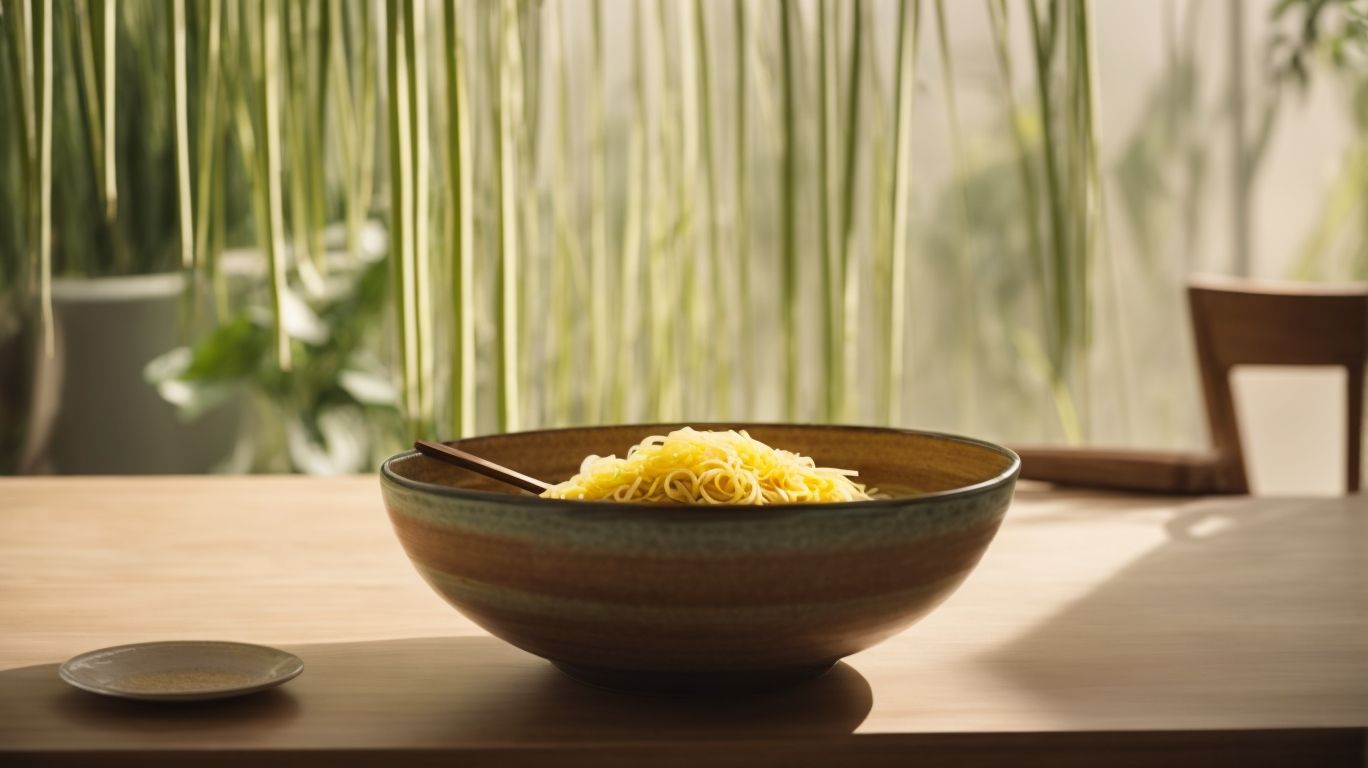
Credits: Poormet.Com – James Lopez
Mastering the art of preparing Misua with Patola involves a series of steps that harmonize the flavors and textures of the ingredients, resulting in a delightful soup dish that captures the essence of Filipino culinary tradition.
First, gather the necessary ingredients:
- Misua noodles
- Fresh patola (sponge gourd)
- Chicken broth or water
- Garlic, onion, and ginger for flavor
- Sliced pork or chicken for protein
- Soy sauce and fish sauce
- Salt, pepper, and cooking oil
Start by sautéing garlic, onion, and ginger in a pot until fragrant. Add the sliced pork or chicken and cook until lightly browned. Pour in the chicken broth or water and bring it to a simmer.
Add the patola slices and let them cook until slightly tender. Season the broth with soy sauce, fish sauce, salt, and pepper to taste.
Next, add the Misua noodles and cook them according to the package instructions, typically for a few minutes until they’re soft but still slightly chewy.
Once the noodles are done, taste the soup and adjust the seasoning if needed. Serve the Misua with Patola piping hot in bowls, garnished with freshly chopped green onions.
Preparing the Ingredients
Before embarking on the cooking process, meticulous preparation of the ingredients is crucial for Misua with Patola. This entails washing, chopping, and organizing the misua, patola, ground pork, garlic, and onion to streamline the cooking flow.
Start by carefully washing the misua noodles to remove any excess starch and ensure they are clean before cooking.
Next, skillfully chop the patola into even slices, allowing for consistent cooking and presentation in the final dish.
Prep the ground pork by seasoning it with the right blend of spices, such as salt and pepper, enhancing the overall flavor profile of the dish.
Chop the garlic finely to release its aromatic flavors during the cooking process.
Finely dice the onion to add a subtle sweetness to the dish, balancing the savory components.
Cooking the Ground Pork
Cooking the ground pork to perfection is a critical stage in preparing Misua with Patola, as it involves browning the meat, infusing it with seasonings, and achieving the ideal texture for savory meatballs in the soup.
When browning the ground pork, ensure the pan is hot before adding the meat to create a Maillard reaction, which enhances the flavor profile and color of the meat. Season the pork with a combination of salt, pepper, garlic, and other desired spices to elevate its taste. To achieve a tender and juicy texture, consider mixing in a binding agent like breadcrumbs or egg. Experiment with various herbs and spices such as oregano, paprika, or even a touch of soy sauce to customize the flavor profile according to your preferences.
Adding the Vegetables
Incorporating the vibrant vegetables such as patola, garlic, and onion into the simmering broth of Misua with Patola is a pivotal step that enriches the soup with layers of flavors, textures, and aromatic notes.
When sautéing the garlic and onion, their fragrant oils infuse into the broth, creating a savory base for the soup.
Patola’s mild flavor and delicate crunch complement the soft texture of the misua noodles, adding a refreshing element to the dish.
Allowing the vegetables to simmer for the right duration ensures they release their natural juices, enhancing the overall taste profile.
Each vegetable brings a unique taste element – the sweetness from the onion, the sharpness from the garlic, and the subtle bitterness from the patola, creating a harmonious blend.
To achieve optimal flavor balance, adjust the seasoning carefully, considering the natural flavors of the vegetables and the saltiness of the broth.
Cooking the Misua Noodles
Cooking the Misua noodles to the perfect texture is a crucial step in the preparation of Misua with Patola, requiring precise timing and boiling techniques to achieve the ideal tender yet firm consistency for a satisfying soup experience.
When cooking Misua, it is essential to ensure that the noodles are not overcooked, as they can quickly turn mushy and lose their delicate texture. To avoid this, carefully monitor the boiling time, typically ranging from 3 to 5 minutes, depending on the brand and thickness of the noodles.
One key tip is to submerge the Misua noodles in boiling water just until they are pliable but still slightly chewy to the bite. Immediately drain and rinse them under cold water to stop the cooking process and prevent them from sticking together.
By following these steps, you can achieve the perfect Misua noodles that complement the flavorful broth and tender Patola, creating a harmonious blend of textures and flavors in every spoonful.
Serving the Dish
Serving the steaming bowl of Misua with Patola is a delightful culinary moment, where the aromatic soup, tender noodles, and savory meatballs come together to create a comforting and satisfying meal experience.
When presenting this traditional Filipino dish, pay attention to the visual appeal of the dish. Garnishing it with fresh coriander leaves or thinly sliced green onions can add a pop of color and freshness to the golden-hued broth. Consider using a beautiful ceramic bowl or traditional soup tureen to elevate the serving experience. The aroma that wafts from the bowl, with hints of ginger, garlic, and onion, tantalizes the senses even before the first spoonful touches your lips.
Tips for Perfecting Misua with Patola
To elevate your culinary skills and create the perfect Misua with Patola, consider these essential tips: use fresh ingredients, adjust seasoning to taste, and experiment with different broths to customize the flavor profile of the soup.
When selecting ingredients, opt for high-quality misua noodles and fresh patola squash to enhance the overall taste and texture of the dish.
- Ensure that the misua noodles are not overcooked to maintain their delicate texture.
- For seasoning adjustments, try adding a touch of soy sauce or fish sauce for depth of flavor.
- Don’t shy away from incorporating aromatic herbs like cilantro or green onions to add freshness.
For a unique twist, consider using a homemade chicken broth or a flavorful vegan broth as alternatives to the traditional broth base.
Personalize your Misua with Patola by adding protein such as shrimp, chicken, or tofu according to your taste preferences while staying true to the dish’s Filipino roots.”
Use Fresh Ingredients
The key to exceptional Misua with Patola lies in the use of fresh, high-quality ingredients, including premium cuts of pork, vibrant vegetables, and flavorful seasonings that elevate the taste and aroma of the soup.
When selecting ingredients for your Misua with Patola, always opt for fresh produce to ensure optimal flavor and nutritional value. For pork, choose marbled cuts that promise tenderness and depth of flavor. Check the vegetables for firmness and vibrant colors, as these are indicators of freshness.
Proper storage is crucial to maintain the quality of your ingredients. Store vegetables in the crisper drawer of your refrigerator and meats in sealed containers to prevent spoilage and cross-contamination. Quality ingredients are the foundation of a delicious dish, so invest time in sourcing the best components for your soup.”
Adjust Seasoning to Taste
Tailoring the seasoning of Misua with Patola to suit individual taste preferences is a key aspect of perfecting the dish, allowing for customized flavor profiles that cater to varying palates and culinary preferences.
Regarding adjusting the seasonings in this delicate noodle soup, there’s a world of possibilities to explore. Experimentation with the right balance of salt, pepper, and other flavor enhancers is where the magic truly happens. Some may prefer a bolder, spicier kick, while others lean towards a more subtle, savory touch. Customizing your Misua with Patola allows you to tap into your creativity in the kitchen, elevating a humble dish to a culinary masterpiece.
Experiment with Different Broths
Exploring diverse broth options for Misua with Patola opens up a world of culinary possibilities, allowing for creative flavor combinations, depth enhancements, and personalized adaptations that elevate the soup to new gastronomic heights.
When choosing the broth for your Misua with Patola, consider the different flavor profiles that each type can offer. A rich chicken broth can impart a comforting and savory taste, while a vegetable broth brings a lighter and fresher note. Beef broth, on the other hand, introduces a robust and hearty undertone, ideal for those seeking a more robust flavor.
Experimenting with various broth variations not only enhances the taste but also adds layers of complexity to your dish. The choice of broth can significantly influence the overall character of the soup, making it crucial to explore different options to find the perfect match for your palate.
Conclusion
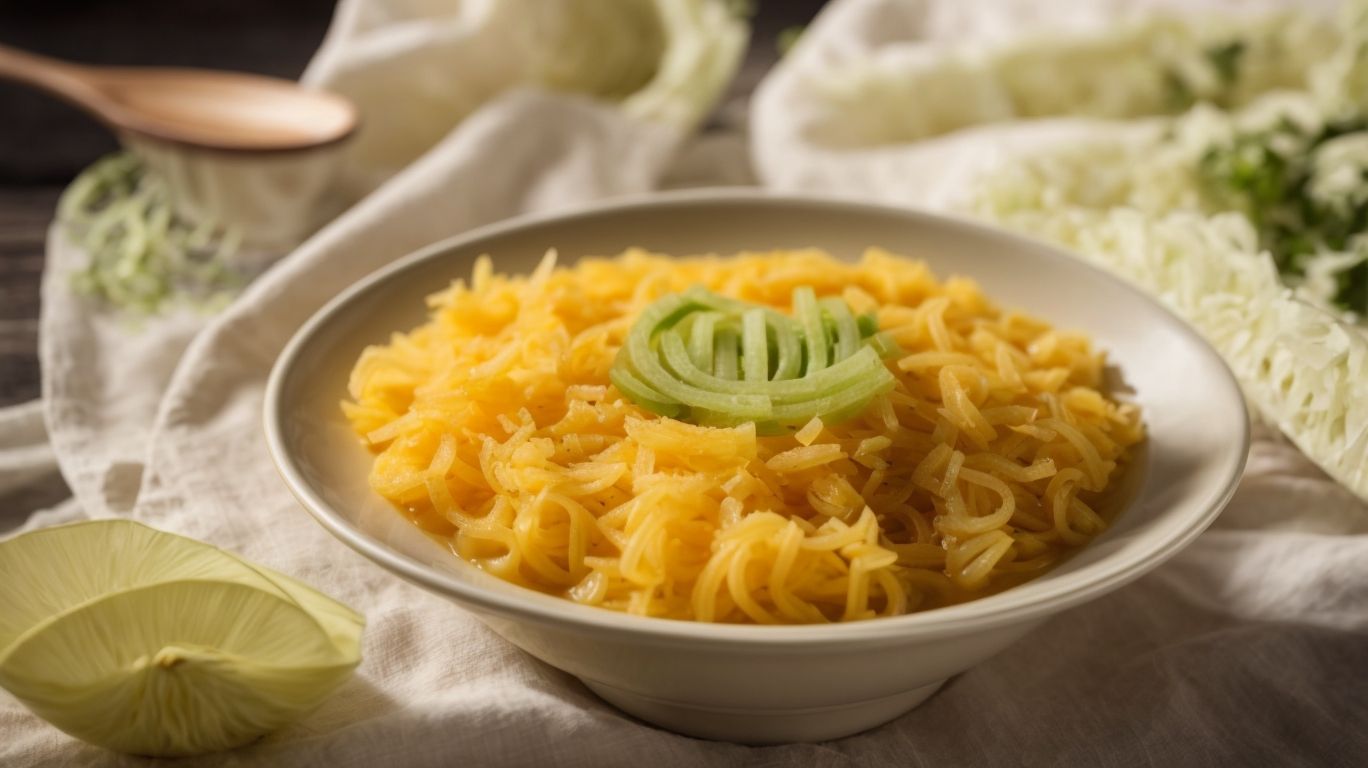
Credits: Poormet.Com – Michael Miller
In conclusion, Misua with Patola encapsulates the essence of Filipino culinary tradition, blending the delicate flavors of misua noodles with the wholesome goodness of patola and savory meatballs to create a heartwarming soup experience that resonates with both comfort and tradition.
This classic Filipino dish not only tickles the taste buds but also serves as a reminder of shared meals with loved ones, the aroma wafting through the kitchen triggering memories of family gatherings and festive occasions.
The tender misua noodles delicately absorb the rich flavors of the broth, while the tender patola and savory meatballs provide a delightful contrast in textures.
Each spoonful of this nourishing soup offers a symphony of flavors that echo the diverse culinary influences present in Filipino cuisine, making Misua with Patola a truly unforgettable gastronomic experience.
About Poormet.com
Poormet.com is a culinary haven where food enthusiasts can explore a treasure trove of recipes, culinary tips, and captivating food photography curated by Chef Chris Poormet himself. This vibrant online platform embodies the passion for gastronomy and culinary creativity.
Renowned for his innovative approach to food, Chef Chris Poormet infuses each recipe with a touch of expertise and a dash of flair that elevates home cooking to a whole new level. Visitors to Poormet.com are not just viewers but participants in a gastronomic journey, learning techniques, flavor combinations, and presentation skills that transform everyday meals into culinary masterpieces.
The virtual kitchen of Poormet.com, led by the culinary maestro, dispenses not just recipes but a culinary education that broadens horizons and ignites a passion for experimenting in the kitchen. With a keen eye for detail and a palate that guides him to create unique dishes, Chef Chris Poormet fosters a community of aspiring chefs, seasoned cooks, and food lovers who seek to delve deeper into the art of cooking.
Frequently Asked Questions
What ingredients do I need to make Misua With Patola?
To make Misua With Patola, you will need misua noodles, patola (luffa or Chinese okra), chicken or pork, chicken broth, onion, garlic, and cooking oil.
Do I need to soak the misua noodles before cooking?
No, you do not need to soak the misua noodles before cooking. Simply add them to the soup and let them cook for a few minutes until they are soft.
Can I use other types of meat instead of chicken or pork?
Yes, you can use other types of meat such as beef or shrimp. However, the traditional version of Misua With Patola uses chicken or pork.
How do I prepare the patola for cooking?
Peel the skin of the patola and remove the seeds. Then, slice the patola into thin, bite-sized pieces before adding them to the soup.
Can I make Misua With Patola without using chicken broth?
Yes, you can substitute chicken broth with vegetable or beef broth. However, using chicken broth will give the dish a richer and more authentic flavor.
How do I prevent the misua noodles from sticking together?
To prevent the misua noodles from sticking together, add a little bit of cooking oil to the soup while cooking. You can also rinse the noodles in cold water before adding them to the soup.

